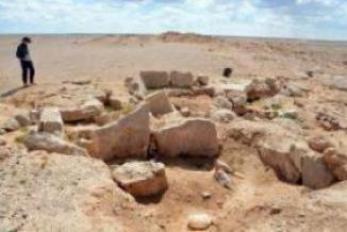AMMAN — Tucked away in a hidden corner of Jabal Amman, the Amman Design Week’s Crafts District offered its visitors design installations, exhibitions, shops, and a cultural programme in the Kabariti Village.
Record added successfully


AMMAN — Khirbet Al Umari is an archaeological site, located 25km southeast of Azraq. It was already in a sadly ruined state when famous archaeologist Nelson Glueck visited it in the 1940s, and was severely disturbed in more recent years by looting and vandalism, noted a Dutch archaeologist.